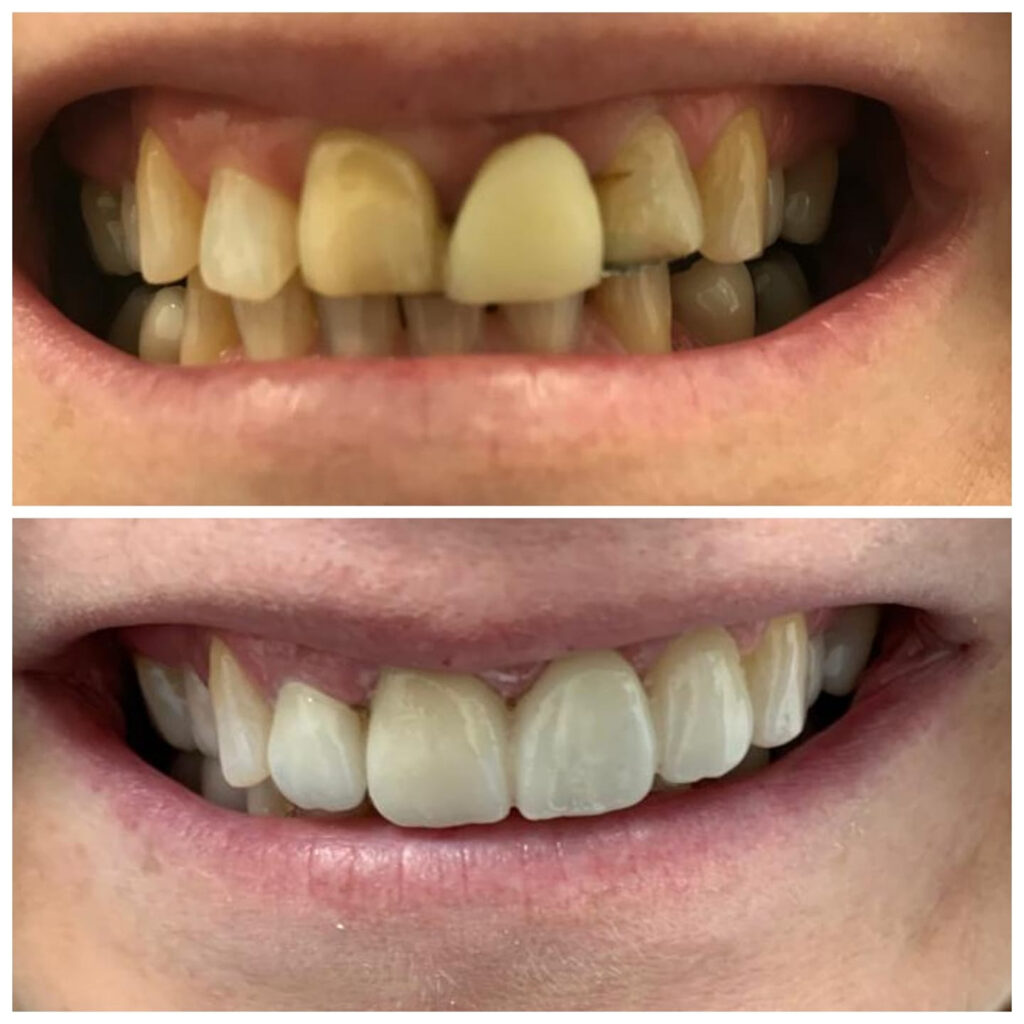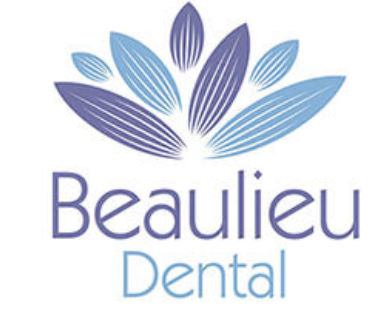Dental Crowns
Gold £400
Bonded £500
Ceramic £670
Veneer £680
Re-Cement Crown £90
Temporary Crown £50
Inlay From £390
A dental crown is a tooth-shaped “cap” that is placed over a tooth – to cover the tooth to restore its shape and size, strength, and improve its appearance. These are available in metal gold or ceramic. When cemented into place, fully encase the entire visible portion of a tooth that lies at and above the gum line.
A dental crown may be needed in the following situations:
1. To protect a weak tooth (for instance, from decay) from breaking or to hold together parts of a cracked tooth
2. To restore an already broken tooth or a tooth that has been severely worn down
3. To cover and support a tooth with a large filling when there isn’t a lot of tooth left
4. To hold a dental bridge in place
5. To cover miss shaped or severely discoloured teeth
6. To cover a dental implant
7. To make a cosmetic modification
For children, a crown may be used on primary (baby) teeth in order to:
• Save a tooth that has been so damaged by decay that it can’t support a filling.
• Protect the teeth of a child at high risk for tooth decay, especially when a child has difficulty keeping up with daily oral hygiene.
• Decrease the frequency of general anaesthesia for children unable because of age, behaviour, or medical history to fully cooperate with the requirements of proper dental care.
In such cases, a paediatric dentist is likely to recommend a stainless steel crown.
Permanent crowns can be made from stainless steel, all metal (such as gold or another alloy), porcelain-fused-to-metal, all resin, or all ceramic.
Stainless steel crowns are prefabricated crowns that are used on permanent teeth primarily as a temporary measure. The crown protects the tooth or filling while a permanent crown is made from another material. For children, a stainless-steel crown is commonly used to fit over a primary tooth that’s been prepared to fit it. The crown covers the entire tooth and protects it from further decay. When the primary tooth comes out to make room for the permanent tooth, the crown comes out naturally with it. In general, stainless steel crowns are used for children’s teeth because they don’t require multiple dental visits to put in place and so are more cost- effective than custom-made crowns and prophylactic dental care needed to protect a tooth without a crown.
Metals used in crowns include alloys that have a high content of gold or platinum, or base-metal alloys (for example, cobalt- chromium and nickel-chromium alloys). Metal crowns withstand biting and chewing forces well and probably last the longest in terms of wear down. Also, metal crowns rarely chip or break. The metallic colour and the high price of gold is the main drawback. Metal crowns are a good choice for out-of-sight molars.
Porcelain-fused-to-metal dental crowns can be colour matched to your adjacent teeth (unlike the metallic crowns). However, more wearing to the opposing teeth occurs with this crown type compared with metal or resin crowns. The crown’s porcelain portion can also chip or break off. Next to all-ceramic crowns, porcelain-fused-to-metal crowns look most like normal teeth. However, sometimes the metal underlying the crown’s porcelain can show through as a dark line, especially at the gum line and even more so if your gums recede. These crowns can be a good choice for front or back teeth as well as long bridges where the metal is needed for strength.
All-resin dental crowns are less expensive than other crown types. However, they wear down over time and are more prone to fractures than porcelain-fused-to-metal crowns.
All-ceramic or all-porcelain dental crowns provide better natural colour match than any other crown type and may be more suitable for people with metal allergies. All-ceramic crowns can be used for front and back teeth.
Temporary versus permanent. Temporary crowns can be made in your dentist’s office, whereas most permanent crowns are typically made in a dental laboratory. Typically, temporary crowns are made of an acrylic-based material or stainless steel and can be used as a temporary restoration until a permanent crown is constructed by a lab.
Preparing a tooth for a crown usually requires two visits to the dentist – the first step involves examining and preparing the tooth, the second visit involves placement of the permanent crown.
First visit: Examining and preparing the tooth
At the first visit in preparation for a crown, your dentist may take a few X-rays to check the roots of the tooth receiving the crown and surrounding bone. If the tooth has extensive decay or if there is a risk of infection or injury to the tooth’s pulp, a root canal treatment may first be performed.
Before the process of making a crown begins, your dentist will anesthetize (numb) the tooth and the gum tissue around the tooth. Next, the tooth receiving the crown is reshaped along the chewing surface and sides to make room for the crown. The amount removed depends on the type of crown used. If, on the other hand, a large area of the tooth is missing (due to decay or damage), your dentist will use filling material to “build up” the tooth to support the crown.
After reshaping the tooth, your dentist typically will use a paste or putty to make an impression of the tooth to receive the crown. Sometimes, though, impressions are made with a digital scanner. Impressions of the teeth above and below the tooth to receive the dental crown will also be made to make sure that the crown will not affect your bite.
The impressions or scans are sent to a dental lab where the crown will be manufactured. The crown is usually returned to your dentist’s office in two to three weeks. If the crown is made of porcelain, your dentist will also select the shade that most closely matches the colour of the neighbouring teeth. During this first office visit your dentist will make a temporary crown to cover and protect the prepared tooth while the crown is being made. Temporary crowns usually are made of acrylic and are held in place using a temporary cement.
Second visit: Receiving the permanent dental crown
At the second visit, your dentist will remove the temporary crown and check the fit and colour of the permanent crown. If everything is acceptable, a local aesthetic will be used to numb the tooth and the new crown is permanently cemented in place.
Because temporary dental crowns are just that — a temporary fix until a permanent crown is ready — most dentists suggest that a few precautions. These include:
• Avoid sticky, chewy foods (for example, chewing gum, caramel), which have the potential of grabbing and pulling off the crown.
• Minimize use of the side of your mouth with the temporary crown. Shift the bulk of your chewing to the other side of the mouth.
• Avoid chewing hard foods (such as raw vegetables), which could dislodge or break the crown.
• Slide rather than lift out dental floss when cleaning between your teeth to avoid pulling off the temporary crown.
Discomfort or sensitivity: Your newly crowned tooth may be sensitive immediately after the procedure as the anaesthesia begins to wear off. If the tooth that has been crowned still has a nerve in it, you may experience some heat and cold sensitivity. Your dentist may recommend that you brush teeth with toothpaste designed for sensitive teeth. Pain or sensitivity that occurs when you bite down usually means that the crown is too high on the tooth. If this is the case, call your dentist. He or she can easily fix the problem.
Chipped crown: Crowns made of all porcelain or porcelain fused to metal can sometimes chip. If the chip is small, a composite resin can be used to repair the chip with the crown remaining in your mouth. This is usually just a temporary fix. If the chipping is extensive, the crown may need to be replaced.
Loose crown: Sometimes the cement washes out from under the crown. Not only does this allow the crown to become loose, but it also allows bacteria to leak in and cause decay to the tooth that remains. If a crown feels loose, contact your dentist’s office.
Crown falls off: Sometimes crowns fall off. Reasons include decaying of the underlying tooth and loosening of the cementing material used to place the crown. If your crown comes off, clean the crown and the front of the tooth. You can replace the crown temporarily using dental adhesive or temporary tooth cement that is sold in stores for this purpose. Contact your dentist’s office immediately. He or she will give you specific instructions on how to care for the tooth and crown for the day or so until you can be seen for an evaluation. Your dentist may be able to re-cement the crown in place; if not, a new crown will need to be made.
Allergic reaction: Because the metals used to make crowns are usually a mixture of metals, an allergic reaction to the metals or porcelain used in crowns can occur, but this is extremely rare.
Dark line on crowned tooth next to the gum line: A dark line next to the gum line of your crowned tooth is normal, particularly if you have a porcelain-fused-to-metal crown. This dark line is simply the metal of the crown showing through. While not a problem, the dark line is cosmetically unacceptable, and your dentist may have to replace the crown with an all porcelain or ceramic one.
Onlays and 3/4 crowns are variations on the technique of dental crowns. The difference between these crowns and the crowns discussed previously is their coverage of the underlying tooth. The “traditional” crown covers the entire tooth; onlays and 3/4 crowns cover the underlying tooth to a lesser extent.
On average, dental crowns last between five and 15 years. The life span of a crown depends on the amount of “wear and tear” the crown is exposed to, how well you follow good oral hygiene practices, and your personal mouth-related habits (you should avoid such habits as grinding or clenching your teeth, chewing ice, biting fingernails, and using your teeth to open packaging).
While a crowned tooth does not require any special care, remember that simply because a tooth is crowned does not mean the tooth is protected from decay or gum disease. Therefore, continue to follow good oral hygiene practices, including brushing your teeth at least twice a day, flossing daily (especially around the crown area where the gum meets the tooth) and rinsing with an antibacterial mouthwash at least once a day.
Before And After



